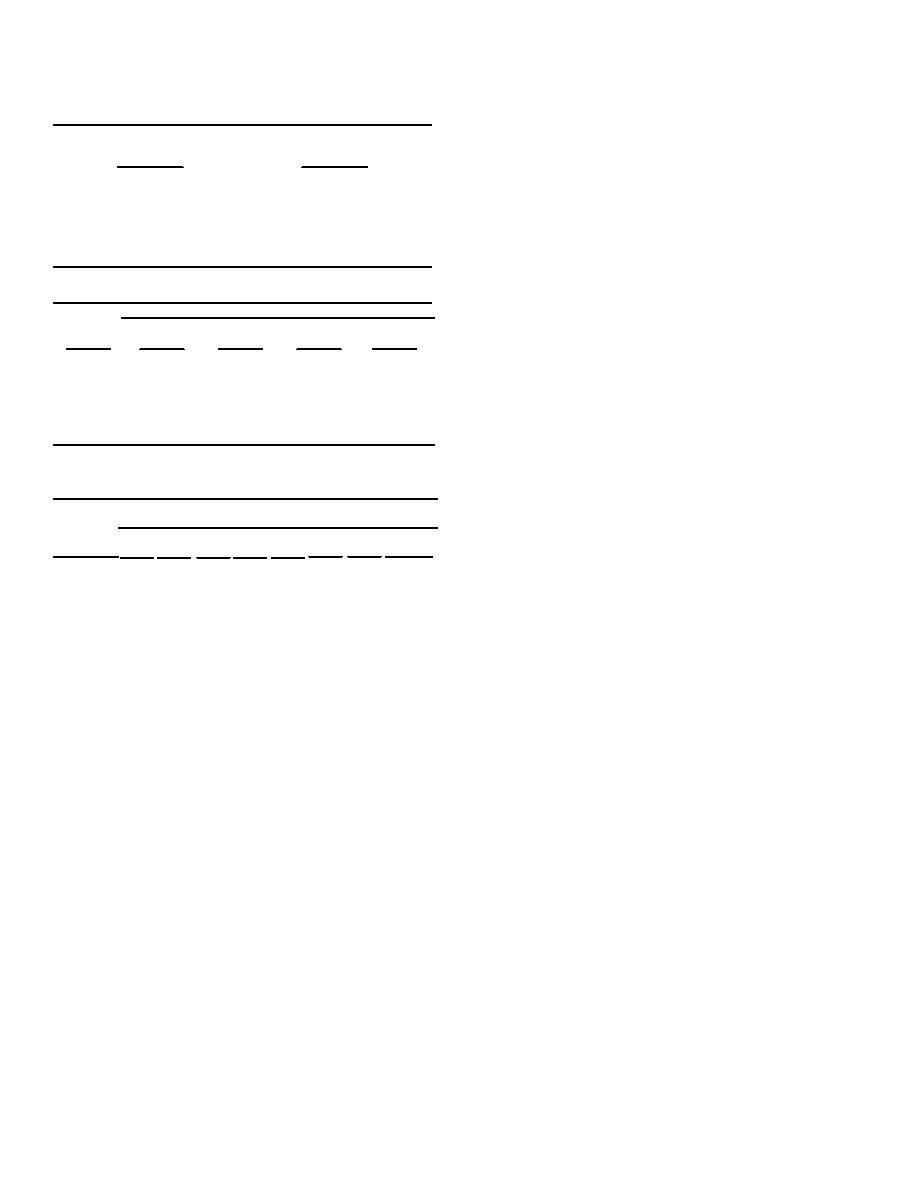
TM 5-822-12
consist of base and subbase material provided the top 6
Table 1. Criteria for selecting aggregate surface road
inches meet the gradation requirements in paragraph 8.
class.
Number
Road
of Vehicles
5. Design of aggregate surfaced airfields
Class
per day
The thickness design of aggregate surfaced airfields is
A
10,000
similar to the design of flexible pavement airfields as
B
8,400-10,000
contained in TM 5-825-2. This procedure involves
C
6,300-8,400
D
2,100-6,300
assigning a class to the airfield based upon the aircraft
E
210-2,100
controlling the design. Having selected the class of
F
70-210
airfield, the design is accomplished using figures 2
G
under70
through 4.
Table 2. Design index for pneumatic-tired vehicles.
a. Classes of airfields. There are four classes of
Design Index
Army airfields. These are Classes I-IV, although only
Category
Category
Category
Category
Class
I
II
III
IV
Classes I-III are considered candidates for aggregate
A
3
4
5
6
surfacing. Each class of airfield is designed for a
B
3
4
5
6
standard loading condition and pass level as defined in
C
3
4
4
6
TM 5-803-4.
Where necessary, airfields may be
D
2
3
4
5
designed for loads and pass levels other than the
E
1
2
3
4
F
1
1
2
3
standard, and the criteria herein provide thicknesses for
G
1
1
1
2
varying pass and load levels.
Table 3. Design index for tracked vehicles and forklift
b. Traffic areas. Army airfields are divided into
trucks.
traffic areas for design purposes. Type B traffic areas
Number of Vehicles per Day
consist of taxiways, the first 1,000 feet of runway ends,
Traffic
(or Week as indicated)
and aprons. Type C traffic areas are the interior
Category
500
200
100
40
10
4
1
1 Per
portions of the runway (between the 1,000 foot runway
Week
V
8
7
6
6
5
5
5
-
ends).
VI
-
9
8
8
7
6
6
5
VII
-
-
10
10
9
8
7
6
c. Thickness criteria (nonfrost areas). Thickness
requirements for aggregate surfaced airfields are
often has greater impact than localized failure on the
determined from figures 2 through 4 for types B and C
hardstand itself. Since these areas will almost certainly
traffic areas.
Thicknesses for type B areas are
be subjected to more frequent and heavier loads than
determined directly from the curves, and type C traffic
the hardstand, the design index used for the primary
areas are designed using 75 percent of the load used to
road should be used for entrances and exits to the
design type B traffic areas. The minimum thickness
hardstand. In the case of large hardstands having
requirement for all cases will be 4 inches. The figure for
multiple use and multiple entrances and exits,
the appropriate airfield class will be entered with the
consideration should be given to partitioning and using
subgrade CBR to determine the thickness required for a
different classes of design. The immediate benefits that
given load and pass level. The thickness determined
would accrue include economy through elimination of
from the figure may be constructed of compacted
overdesign in some areas and better organization of
granular fill for the total depth over the natural subgrade
vehicles and equipment.
or in a layered system of granular fill and compacted
subgrade for the same total depth. The layered section
i. Thickness criteria (nonfrost areas). Thickness
should be checked to ensure that an adequate thickness
requirements for aggregate surfaced roads are
of material is used to protect the underlying layer based
determined from figure 1 for a given soil strength and
upon the CBR of the underlying layer. The granular fill
design index. The minimum thickness requirement will
may consist of base and subbase material provided the
be 4 inches. Figure 1 will be entered with the CBR of
top 6 inches meet the gradation requirements of
the subgrade to determine the thickness of aggregate
paragraph 8.
required for the appropriate design index. The thickness
determined from the figure may be constructed of
6. Design CBR for select materials and subbases
compacted granular fill for the total depth over the
Design CBR values and materials requirements for
natural subgrade or in a layered system of granular fill
select materials and subbases are to be selected in
(including subbases) and compacted subgrade for the
accordance with TM 5-825-2 except as modified in table
same total depth. The layered section should be
4.
checked to ensure that an adequate thickness of
material is used to protect the underlying layer based on
the CBR of the underlying layer. The granular fill may
5


 Previous Page
Previous Page
